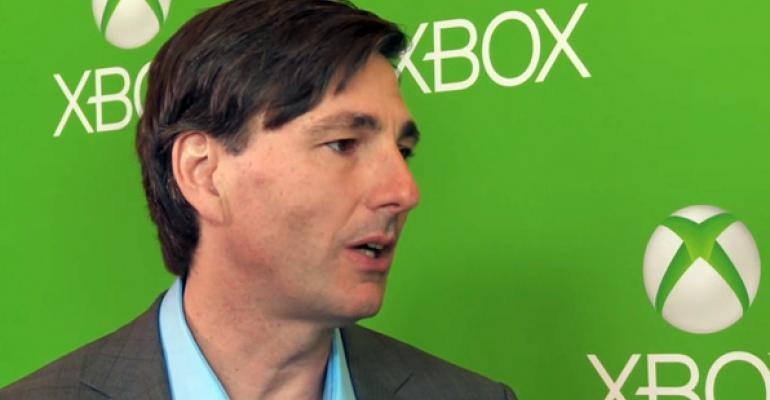In the wake of a disastrous E3 launch cycle for its Xbox One, Microsoft is taking a page from the wrong playbook by doubling down on the most controversial aspects of the entertainment console. After the disaster of Windows 8, you’d think the company would know that owning up to and correcting mistakes quickly is the way to go.
There’s still plenty of time between now and the November release of Xbox One for Microsoft to reverse course, and one has to think that the firm’s marketing brains are now debating the possibilities in Redmond. But publicly this week, Microsoft has done nothing but dig itself a deeper hole.
I wrote about Microsoft’s loss at E3 earlier this week in "Microsoft vs. Sony in Dueling E3 Presentations," and in my PlayStation 4 preview I make the case that Microsoft’s Xbox One is at least the equal of Sony’s coming console. But whether it's hubris, inept marketing, or just the wrong product at the wrong time, Microsoft’s Xbox One messaging is simply ringing hollow with its most important customers: the hardcore gamers that it expects to buy the device in November.
Case in point: When asked about Xbox One’s controversial and Draconian “always on” Internet connection requirement, Don Mattrick, the president of the Interactive Entertainment Business at Microsoft, this week recommended that those gamers stick with the aging Xbox 360.
“The Xbox One is the future-proof choice,” he said. “We have a product for people who aren’t able to get some form of [Internet] connectivity. It’s called Xbox 360 … If you have zero access to the Internet, [the Xbox 360] is an offline device. Seriously, [when I saw the complaints about Xbox One] and thought about who was really most impacted [by the always-on requirement], it was a person who said, 'Hey, I’m on a nuclear sub' … I can empathize, if I was on a nuclear sub, I’d be disappointed [too].”
And there you have it: The damage is done not by Sony, which again was quick to capitalize on Microsoft’s Xbox One design decisions, but by Microsoft itself. Having followed Microsoft for 20 years and watched its PR machinations direct the conversation, it’s obvious that Mattrick was obeying a very strict messaging script that required him to communicate key points. But pushing a previous-generation console as a response to very real complaints about a device that has yet to ship was the wrong decision. It just cements the notion that Xbox One isn’t the right product for the right audience.
Indeed, in an earlier editorial called "What if Xbox One is Another Windows 8?," I semi-rhetorically wondered whether the marketing geniuses who thought combining separate mobile and PC operating systems into a single OS weren’t behind the Xbox One’s similarly confused identity. With this device, Microsoft is trying to please too many incompatible groups of users: hardcore gamers, consumers who have bought into the broader Microsoft ecosystem, and casual users who just want to enjoy TV and entertainment services. This mirrors the disconnect with Windows 8, which presents mobile UIs to desktop users and a Windows desktop to tablet users.
The core issue might be that both Xbox One and Windows 8 represent bets on bigger, longer-term visions than today’s users aren't interested in hearing about, let alone dealing with day-to-day. But unlike with Windows 8, which is being retroactively “improved” with features that should have been there from the get-go, Microsoft still has a chance to “fix” Xbox One before it’s released. These fixes are easy to implement and should include:
Always off. Nix the always-on requirement in a way that makes sense. For example, if you can’t access the Internet, you can’t share games with other users electronically. Make it an option.
Lower the price. Ship a version of the console without Kinect for $399, matching Sony’s price for the PlayStation 4.
Used games. Do not allow third-party game makers to charge a fee for used games. The system works as-is.
Kill stupid features. Live TV is a red herring and only adds to the complexity of the device at a time when the world is in fact moving away from live TV. This one thing stands in sharp contrast to the device’s otherwise leading-edge features.
Ultimately, Microsoft needs to fix Xbox One, not defend it.The Xbox team has been blogging up a storm since the May Xbox One reveal, but most of their posts are defensive in nature, as if by explaining their strategy enough they can get people to understand why their decisions make sense. If they made sense, Microsoft wouldn’t have to explain them so often.




